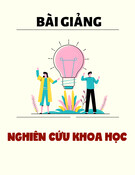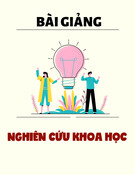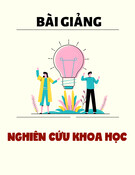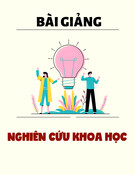
TNU Journal of Science and Technology 230(04): 332 - 342
http://jst.tnu.edu.vn 332 Email: jst@tnu.edu.vn
CULTURALLY RESPONSIVE TEACHING PRACTICE
IN JAPANESE UNIVERSITIES: A SCOPING REVIEW
Luong Minh Phuong
*
Vietnam Japan University
ARTICLE INFO ABSTRACT
Received:
24/03/2025
In recent decades, the internationalization of higher education in Japan
has attracted a large number of international students, thereby increasing
the need for culturally responsive teaching. This paper analyzes such
culturally responsive teaching practice in Japanese universities
from two
perspectives: (i) policies and programs promoting the internationalization
of higher education; and (ii) the implementation of
culturally responsive
teaching in Japanese universities. The findings show that Japan has mad
e
considerable progress through policies that integrate multicultural
elements into higher education, particularly in English-
based bachelor
training programs and global education initiatives. However,
the
implementation remains largely superficial, fragmented, and hindered by
rigid institutional structures, a lack of support mechanisms for faculty,
and a tendency to favor assimilation over fostering intercultural
integration
. Japan’s higher education system continues to face numerous
barriers to fully and systematically implementing
culturally responsive
teaching, including the absence of standardized national guidelines,
uneven language proficiency among faculty, and limited opportunities for
professional development in this area.
Revised:
28/04/2025
Published:
29/04/2025
KEYWORDS
Culturally responsive teaching
Internationalization
Higher education
University
Japan
TỔNG QUAN DẠY HỌC THÍCH ỨNG VỚI MÔI TRƯỜNG ĐA VĂN HÓA
Ở CÁC TRƯỜNG ĐẠI HỌC NHẬT BẢN
Lương Minh Phương
*
Trư
ờ
ng
Đ
ạ
i h
ọ
c Vi
ệ
t Nh
ậ
t
THÔNG TIN BÀI BÁO TÓM TẮT
Ngày nhậ
n bài:
24/03/2025
Trong những thập niên gần đây, quốc tế hóa giáo dục đại học ở Nhật Bả
n
đã thu hút nhiều sinh viên quốc tế, thúc đẩy nhu cầu dạy học thích ứ
ng
với môi trường đa văn hóa. Bài báo này phân tích việc dạy học thích ứ
ng
với môi trường đa văn hóa từ hai góc độ: (i) chính sách và chương tr
ình
thúc đẩy quốc tế hóa giáo dục đại học; (ii) thực tiễn triển khai dạy họ
c
thích ứng với môi trường đa văn hóa tại các trường đại học Nhật Bản. Kế
t
quả cho thấy Nhật Bản đã đạt được nhiều tiến bộ
thông qua các chính
sách tích hợp yếu tố đa văn hóa vào giáo dục đại học, đặc biệ
t là các
chương trình giảng dạy bằng tiếng Anh và sáng kiến giáo dục toàn cầ
u.
Tuy nhiên, việc thực hiện còn mang tính hình thức, thiếu liên kết và gặ
p
khó khăn bởi cấu trúc thể chế cứng nhắc, thiếu cơ chế hỗ trợ giả
ng viên,
cũng như xu hướng thiên về đồng hóa hơn là khuyế
n khích tương tác đa
văn hóa. Hệ thống giáo dục đại học Nhật Bản vẫn đối mặt với nhiề
u rào
cản trong việc triển khai giảng dạy thích ứng một cách toàn diệ
n, như
thiếu hướng dẫn quốc gia chuẩn hóa, năng lực ngôn ngữ chưa đồng đề
u
c
ủ
a gi
ả
ng viên, và h
ạ
n ch
ế
v
ề
cơ h
ộ
i phát tri
ể
n chuyên môn.
Ngày hoàn thiệ
n:
28/04/2025
Ngày đăng:
29/04/2025
TỪ KHÓA
Dạy học thích ứng với môi
trường đa văn hóa
Quốc tế hóa
Giáo dục đại học
Trường đại học
Nhật Bản
DOI: https://doi.org/10.34238/tnu-jst.12385
Email: lm.phuong@vju.ac.vn

TNU Journal of Science and Technology 230(04): 332 - 342
http://jst.tnu.edu.vn 333 Email: jst@tnu.edu.vn
1. Introduction
Internationalisation in higher education (HE) has increasingly promoted throughout the world
over the past decades. The internationalisation of higher education (IoHE) refers to a deliberate
and strategic approach to embedding international, intercultural, or global perspectives within the
purposes, functions, and educational practices of post-secondary institutions [1]. This process
aims to improve the overall quality of teaching and research for both students and academic staff,
while simultaneously fostering a constructive impact on society [2], [3]. In many countries,
internationalisation is geared towards expanding international cooperation and international
student recruitment [4]. Therefore, in this IoHE process, culturally responsive teaching (CRT)
has been a critically important issue for the provision of quality education in higher education [5].
In this sense, CRT is defined as a pedagogy that encourages teachers to value different cultural
backgrounds, cultural characteristics, prior experiences, frames of reference, perspectives, and
learning patterns of ethnically diverse students as a foundation for making teaching/learning more
relevant to and effective for the students. CRT teaches to and through the strengths of the
culturally-diverse students [6].
Japan hosts a substantial population of international students, with a reported number of
279,274 in 2023. Of these, 188,555 were enrolled in higher education institutions, representing
over 30 different countries, including China, Nepal, Vietnam, South Korea, and Myannmar [7].
In such culturally diverse environment, higher education institutions in Japan have made great
efforts in promoting and supporting CRT in schools [8], particularly with the emerging
development of technology [9]. CRT is particularly significant for students who have persistently
been marginalized within diverse learning environments [10], [11]. Given a paucity of research
on CRT, this paper makes a review study on how CRT works in culturally diverse settings in
higher education in Japan.
2. Scoping Review Methodology
A scoping review was conducted to develop a comprehensive overview of the literature on
CRT in Japan’s higher education. On the basis of a nine-step process of a scoping review, this
paper has systematically developed a database on CRT in this country with its set criteria [12].
Identifying review questions
The article addresses two key questions:
What are the government policies and initiatives aimed at fostering internationalization in
higher education, with a particular focus on Culturally Responsive Teaching (CRT)?
How are CRT practices being implemented in Japanese universities?
Developing the protocol
A database of sources pertaining to CRT in Japan’s higher education was developed to
systematically address the two review questions.
Determining inclusion criteria
The sources were identified and screened according to predefined inclusion criteria, which
encompassed: (i) thematic relevance, with a focus on internationalization policies or CRT
practice in Japanese higher education; (ii) geographic scope, requiring Japan-specific data or
context; (iii) educational level, limited to the higher education sector; (iv) source type, including
peer-reviewed articles, government reports, or credible grey literature.
Identifying evidence
In accordance with the established inclusion criteria, the search and selection of sources were
conducted through the following systematic steps:
Identifying search terms
Search terms helped in the search for potentially useful publications and categorized the
articles found. The entry terms include internationalisation, intercultural competence, culturally

TNU Journal of Science and Technology 230(04): 332 - 342
http://jst.tnu.edu.vn 334 Email: jst@tnu.edu.vn
responsive teaching, culturally relevant pedagogy, international programs or foreign education,
students, international students or foreign students or inbound students or outbound students,
higher education, university, Japan.
Combining search terms
In order to shape the search strategy, two main Boolean operators including “AND” and “OR”
were used. An example of combined terms for search string is:
(“culturally responsive teaching” or “culturally relevant pedagogy” or “internationalisation”
or “intercultural competence” or “international programs” or “foreign education” or “overseas
education”) AND (“Japan” or “Japanese country”) AND (“higher education” or “universities” or
“students” or “undergraduates” or “international students” or “foreign students” or “exchange
students”).
In this way, current and potentially relevant evidence has been collected.
Information source
The databases were accessed for searching publications: Education Research Complete
(EBSCO), Website of Sciences (WoS), Scopus, ERIC. Moreover, Google Scholar was used to
search a wide range of sources such as articles, reports, conference proceedings, and books. The
relevant sources were also searched on the basis of the reference lists of the searched
publications. This helped to quickly identify other relevant literature.
Selecting evidence
One hundred and twenty-eight documents were collected using the search terms and search
string. Almost half of these articles were initially removed through automatic de-duplication and
the inclusion criteria for selecting relevant literature for review. After the titles and abstracts of
all retrieved documents were carefully reviewed for relevance, a total of 55 full-text articles were
suitably obtained for the study. Thirty-seven articles were eventually included in the scoping
review for this paper.
Extracting data
The selected articles were examined based on two thematic foci, including the CRT
development policies and strategies or interventions in Japan and the practice of CRT within
Japanese higher education institutions.
Analysing the evidence
A deductive approach was adopted to cluster and analyse data in two thematic categories as
noted. In this way, the clusters of the analysed data were developed by the emerging themes
within each category that are presented as findings of the review.
Presenting the results
Findings are thematically organized to align with the two review questions, ensuring a
coherent presentation of the evidence.
Summarizing evidence and discussing implications
Drawing on the key findings, this article highlights several macro- and micro-level
implications for enhancing CRT in Japan’s higher education institutions.
3. Scoping review results
The data analysis indicates that the Japanese government has increasingly prioritized the
advancement of CRT in higher education through the implementation of key policies and
strategies. While notable progress has been made in CRT practices within Japanese higher
education institutions over the past decade, considerable room for further improvement remains
in the years ahead.
Government of Japan’s CRT policies and strategies
It was ever believed that Japanese society was a homogenous culture and race [13]. This belief
significantly influenced the attitudes and behavior of this country's citizens toward their social
interaction with communities from other cultures. They treated and communicated with each other

TNU Journal of Science and Technology 230(04): 332 - 342
http://jst.tnu.edu.vn 335 Email: jst@tnu.edu.vn
on the same culture basis. Similarly, the government of Japan was also influenced and directed by
such belief before the 2000s. As a consequence, a series of policies and laws discriminating against
ethnic minority groups in Japan were approved [13]. For example, following World War II, Korean
communities in Japan established schools to preserve their language and culture. However, in
January 1948, the Japanese government, under directives from the Allied Occupation Forces
ordered the closure of these Korean schools. Moreover, despite the important role that international
and ethnic schools play in providing alternative education for foreign children, Nomoto notes that
these institutions often lack financial support from the government.
However, the approval of "Declaration on the Rights of Indigenous Peoples" by the United
Nations General Assembly in 2007 forced the Japanese government to quickly remove the above
laws. Furthermore, the existence and rights of ethnic groups (i.e. Ainu) and immigrants were
officially acknowledged [13]. Yet, the rights of these groups remain not to be adequately secured
by the Government of Japan (GoJ) and equally recognized or respected by Japanese citizens [14].
Worse, the government of this country has adopted the immigration law in order to restrict the
number of immigrants into Japan. As such, culturally responsive teaching (CRT) in the education
sector has inadequately been promoted for the past years. In practice, CRT initially appeared in
the 1990s. Until the 2010s, the policy on CRT in this country at the grassroots level underlined
the assimilation approach and direction. “Living together in multicultural environment” has been
recognized by Japan’s policy makers in a series of policies related to CRT since 1993 [15].
Accordingly, schools and educators are responsibly for supporting non-Japanese students to adapt
to and integrate into schooling and curriculum of the country. Despite these efforts, the
assimilation policies have worsened not only the subordination of this vulnerable group but also
the discrimination among different ethnic groups in this country [11].
In higher education, the policies seem to be more open and advanced in CRT. GoJ has
attached priority to higher education development because of its significant contributions to the
economic development of this country with a strong emphasis on research and high-quality
human resource development [16]. Ministry of Education, Culture, Sports, Science and
Technology (MEXT) of Japan has promulgated many policies on creating conditions for higher
education development in Japan. Among these policies, the policy on restructuring Japan’s
universities was developed by MEXT in 2001. In this policy, three major objectives were set for
reforming Japan’s university system. They are: (i) promoting restructuring and merger of national
universities, (ii) applying management models of private universities to national ones; and (iii)
engaging third parties in evaluating the performance of universities [17]. Despite Japan’s
traditionally emphasized homogeneity in higher education, GoJ abolished general standards for
higher education curriculum and strongly promoted universities to actively self-assess the quality
of their teaching and learning [18]. As a result, significant shifts to embrace multiculturalism and
cultural diversity have been achieved and driven by both government policies and institutional
initiatives. All these policies of GoJ aims at securing the high ranking and quality of Japanese
universities in the international arena. In this effort, Japan’s universities have promoted the
internationalization of its curriculum in response to the latest international standards for higher
education [17]. Among the prioritized issues, CRT enhancement has become the main issue on
working agenda of Japan’s universities. There have been four main categories of policies and
initiatives in this process:
Internationalization of higher education
Over the past two decades, the Japanese government has introduced a series of strategic
initiatives aimed at advancing the internationalization of higher education. A foundational effort
in this direction was the Global 30 Program, launched in 2009 by the Ministry of Education,
Culture, Sports, Science and Technology (MEXT). Designed to enhance the global
competitiveness of Japanese higher education, the program aimed to attract 300,000 international
students by 2020 and strengthen the global presence of Japanese universities. Thirteen core

TNU Journal of Science and Technology 230(04): 332 - 342
http://jst.tnu.edu.vn 336 Email: jst@tnu.edu.vn
universities were selected to lead the initiative, each tasked with developing degree programs
taught entirely in English to improve accessibility for international students. In addition to
curriculum reform, these institutions were required to foster culturally inclusive academic
environments, implement faculty development programs centered on multicultural education, and
establish comprehensive student support systems. These support structures included language
assistance, counseling, and orientation programs aimed at facilitating the academic and social
integration of international students. Moreover, the program emphasized positioning Japan as a
prominent global education hub and a contributor to international academic discourse [19].
Despite its ambitious goals, the Global 30 Program encountered several critical shortcomings
that ultimately limited its effectiveness and long-term impact. As Hollenback [20] highlights, the
program prioritized quantitative metrics—such as international student enrollment and global-
rankings—over deeper structural reforms needed for genuine internationalization. Many
universities lacked sufficient institutional support, resulting in inadequate services, weak cultural
integration efforts, and a tendency to isolate international students through segregated English-
taught programs. Recruitment strategies were also misaligned with global student trends, and the
program’s early termination in 2014 further curtailed its potential for sustainable change.
These limitations underscored the need for a more comprehensive and system-wide approach
to internationalization, leading to the launch of the Top Global University Project in 2014. This
Project sought to further enhance institutional competitiveness through governance reform,
increased international faculty recruitment, and expanded English-medium instruction in 37
universities. The program has significantly contributed to developing cultural diversity on
campuses and improving Japan's position in global education rankings [20]. Complementary to
this effort, the Re-Inventing Japan Project supported the creation of joint and double degree
programs and facilitated academic mobility with strategic regions, including Asia, Europe, and
North America. A notable subcomponent, CAMPUS Asia, promoted trilateral cooperation among
Japan, China, and South Korea by enabling credit transfer and cross-border academic exchange.
Although these initiatives sought to propel Japanese universities onto the global stage, its
implementation revealed critical issues related to financial sustainability, institutional autonomy,
policy execution, and realistic goal-setting in practice [17]. Specifically, financial sustainability
emerged as a major concern, with participating universities experiencing substantial annual
budget cuts - up to 37% - which curtailed research funding, international student scholarships,
and staff contracts. The project’s top-down implementation imposed rigid, performance-based
metrics aligned with global-rankings, thereby constraining institutional autonomy and
suppressing context-specific innovation. Additionally, language policy reforms, particularly the
extension of English proficiency requirements to administrative staff, were poorly supported,
generating communication barriers and operational stress [17]. These shortcomings challenged
the achievement of the project’s ambitious objectives and the structural transformation of
Japanese higher education institutions toward internationalization. Concurrently, the Go Global
Japan Project launched in 2012, focused on cultivating globally competent graduates by
encouraging outbound student mobility and integrating global perspectives into domestic
education [17]. These initiatives, supported by sustained funding through MEXT and the Japan
Student Services Organization (JASSO), collectively reflect Japan’s strategic commitment to
embedding internationalization as a core pillar of higher education reform and global academic
engagement. However, some key shortcomings of this initiative include ambiguous goals, an
overemphasis on short-term, quantifiable outcomes, and a competitive funding model that limited
institutional autonomy and hindered deep, sustainable internationalization [17].
Guidelines for foreign student admissions
The Guidelines for Foreign Student Admissions in Japan, developed by MEXT, aim to
streamline and promote international student admissions to Japanese higher education
institutions. This involves creating support systems such as language assistance (i.e. Japanese


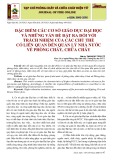
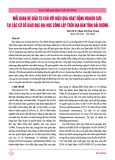
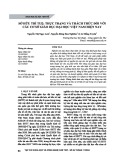
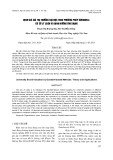

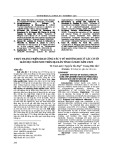
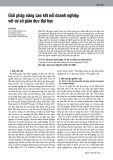



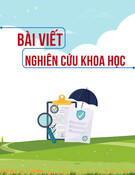

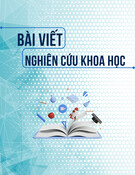
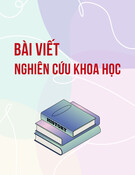
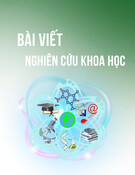

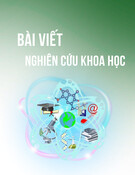


![Định hướng giáo dục STEM trong trường trung học: Tài liệu [chuẩn/mới nhất]](https://cdn.tailieu.vn/images/document/thumbnail/2025/20251124/dbui65015@gmail.com/135x160/25561764038505.jpg)
